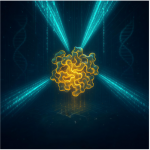 |
Enzymology for Discovery & Innovation Core |
 |
Coordinator:
Prof. Roberta Iacono (roberta.iacono@unina.it)
The Enzymology for Discovery & Innovation Core brings together a synergistic set of platforms dedicated to the discovery, engineering, and valorization of biocatalysts. From the exploration of extreme environments to bioinformatic mining, from enzyme design to functional characterization and therapeutic screening, this infrastructure provides a fully integrated workflow to transform basic research into innovative solutions for industry, environment, and health. This Core is part of IBISBA (https://ibisba.eu/about/) a pan-European distributed research infrastructure dedicated to industrial biotechnology and of the Unità di Ricerca presso Terzi (URT) of the Institute of Biosciences and BioResorces-CNR in the Department of Biology. The Core is partly supported by the National Biodiversity Future Center (European Union NextGenerationEU a Project Code CN_00000033, Concession Decree No. 1034 of June 17, 2022 adopted by the Italian Ministry of University and Research, CUP E63C22000990007) and the project ITINERIS (ITalian INtegrated Environmental Research Infrastructures System – IR0000032), (CUP B53C22002150006) Funded by EU – Next Generation EU. PNRR – Mission 4 “education and Research” – component 2 “From Research to Business” – Investment 3.1 “Fund for the realisation of an integrated system of research and innovation infrastructures).





